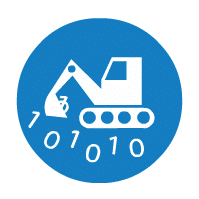The fast food industry has experienced an upswing during Corona. However, the market has been in decline in recent years. The numerous providers are in fierce competition. Local providers and international providers are engaged in a fierce price war in various categories. New platforms, such as Uber, are entering the market and want a slice of the pie. Price management for fast food is therefore becoming increasingly important. As is usually the case in many other sectors, prices are determined on the basis of costs and competition. There is usually no customer-oriented analysis based on willingness to pay, which means that many companies lose profit potential.
In collaboration with CustomersX®, a customer-oriented price management system was established for a fast food company. The price positioning, the price model, the price campaigns and the offer management were aligned in a customer-oriented manner. To this end, two price surveys were conducted with customers and non-customers. In the first round, existing customers were surveyed in order to systematically increase customer value. In the second round, non-customers were also included in order to determine the market potential for future growth. With the help of the results, the company was able to significantly increase its attractiveness and profitability.
Price management consulting
Optimize your prices based on your customers' willingness to pay.
Contents:
- How does fast food work?
- What are the key success factors for price management in the fast food industry?
- What are the key pricing strategies?
- What potential does customer-oriented price management have?
How does fast food work?
Based on our DTC approach , we developed a project approach to establish customer-oriented price management in the company.
The first step was to analyze the existing offering, price positioning, pricing model, price campaigns, IT landscape, existing competencies, customer data and relevant competitors. This revealed that many dimensions had grown historically. No customer surveys had been conducted to date. As a result, there was great uncertainty as to where the respective priorities should be set. Previously, there had been a strong focus on product quality and the quality of delivery. The internal impression here was that there could still be great potential for improvement. A customer value analysis came to the conclusion that only a small proportion of the customer base had succeeded in increasing customer value. Furthermore, it was unclear how the company was perceived in the market in terms of price positioning. It should be noted that production costs and delivery costs should be optimally integrated into the price management for fast food.
Success factors for fast food price management
In a second step, a comprehensive customer survey was conducted. Due to the large number of uncertainties, three parallel customer surveys were conducted. This is where CustomersX’s extensive experience in customer surveys and customer data management paid off. This made it possible to analyze a large part of the product range and develop a sustainable strategy for systematically increasing customer value. The conjoint, van Westendorp and Gabor Granger methods were combined in such a way that the survey was not too challenging for the participants but numerous customer insights could be gained. Based on the results, it became clear that the price positioning was ideal. It also became clear that a more complex pricing model is an advantage. Weaknesses were identified in the area of offer price management and price promotions.
At a glance

40%
Customer Value-based Decision Making

20%
Customer-centric transformation

20%
Co-creation

20%
Customer Management
What are the key pricing strategies?
What potential does customer-oriented price management have?
In the final step, the results were summarized and recommendations were made for price positioning, the price model, price campaigns, offer management, customer data management and the IT infrastructure. In addition, training was provided to ensure that the customer has the skills to make customer-oriented pricing decisions in the future. Price management for fast food is highly dynamic. This is why the development and expansion of price management skills is so important.
With regard to customer data and the IT infrastructure, it became clear that an individualized approach is necessary in order to generate an impact with a low loss of profitability, especially with price promotions. Instead of using a watering can to “make all customers happy” with discounts, the aim is to apply discounts to customers who have a high potential for increasing customer value.
Overall, the ROI of the consulting project was high. As clear priorities could be determined, numerous findings for the optimization of the price model, offer management and price campaigns were identified. Basically, the recommendation can only be repeated to invest more in the skills and concept of price management, as this is the greatest lever for increasing profits.
* We take confidentiality with our customers seriously. The name has been changed, but not the content.




